It was a perfect match.
The sixth grade team at Lyndon Town School were looking for an end of year interdisciplinary project. They wanted students to reconnect with the community after two years of pandemic schooling.
The Town of Lyndon was calling for community members to help generate ideas about how to improve downtown. They were in the “consider” phase of the Revamp the ‘Ville, a year-long “community-driven planning process.”
Students, town officials, and community members intermingled. Connections ensued. And a whole slew of fantastic ideas were developed, shared, and celebrated.
Read on for a play by play of this magical month of project based learning, along with reflections and tips from the students and adults who made it happen.
Breaking out of COVID isolation
After a year of pandemic schooling in 2020-2021 with social distancing and many students opting for remote rather than in-person learning, everybody was ready to get back to something more normal. The beginning of the 2021-2022 school year, however, saw a rise in cases that caused more disruptions and further cautionary measures.
By the end of the year, things were feeling more settled. Going into the spring, the sixth grade team knew they wanted to do an interdisciplinary project. They also wanted to help students make connections across content areas and with the community. Tyler Willis, the Humanities teacher, enrolled in a graduate course about project based learning. As a result, he was able to bring resources and ideas to the team in line with their goals and use his assignments in the course to further the project planning.
Tyler explained the connection impetus this way:
We felt that through the years of Covid, we’d strained the relationship between our parents, our community members, and the school. So much was Covid focused that we really wanted to try and open up what we did as a project. We wanted to bring our kids back into the community and bring the community back into our school.
In line with this reconnection goal, the team wanted the project to feel like a celebration of sorts. They were committed to asset-based approaches in their everyday teaching and through structures like Student Led Conferences.
Luckily, the Revamp the Ville process underway in their community was highly aligned with their goals. It was an asset-based, action oriented, inclusive community project. The team just needed to figure out how to bridge the gap so that the students could meaningfully participate while also learning what they needed to for school.
Interdisciplinary clarity and collaboration via the Transferable Skills
The team had big ideas of all the directions they could take the project. They wanted it to be vibrant and emergent in a way that would be impossible to completely preplan.
With this in mind, the team decided to use Transferable Skills (cross curricular proficiencies) to craft their learning objectives. More specifically, they chose one: self-direction.
“Less is more”, Tyler reflected later. Focusing on self-direction provided cohesion across content areas. The team created a scale for self-direction and then provided additional detail to students based on task. For example, the task sheet for planning and project management provided indicators at each proficiency level that could be used during work sessions. Over time the students developed an understanding of what self-direction looked like in different contexts so that they could self-assess, provide feedback to peers, and understand feedback they received from others.
By focusing on self-direction, the team could calibrate and collaborate effectively. Tyler explained “we tried to break it up as a team so that we didn’t have to assess every single student we had in front of us every single day. We had conversations about what are we seeing from different students so that it almost took on like a team based assessment kind of thing.”
Furthermore, this type of collaboration felt like something the team had long been striving for in their Professional Learning Community (PLC). Tyler observed that whereas it is hard to look at data together from different content areas, “this feels like a way to tackle a true PLC model. Are we really data driven? We can be if we are focusing on Transferable Skills.”
Launch day
A good project deserves a great entry event.
On a beautiful Monday morning at the beginning of May, the sixth grade team took a bus to downtown Lyndonville. In small teams led by one or two teachers, students walked around town snapping photos and taking notes. The scavenger hunt asked them to observe and record the pros and cons of their town in three areas: business and economy, recreation opportunities, and attractiveness.
Each group stopped by the Aubin Electric office, where owner CJ Aubin gave them a quick history lesson. Students were enthralled to hear that he remembers coming to the building as a kid when it was a train stop, where you could earn 10 cents a bag to help unload goods. After one group left, CJ waxed poetic about his enthusiasm for the project:
These kids just need to be pointed in the direction to see that their dreams and goals can benefit everybody around them where they live. It all comes down to their dreams – they can make it happen and it all starts now.
By the end of the day, students were already coming up with ideas for improvements to the town: more trashcans to reduce litter, more community events to bring people together, brighter crosswalks, and better food options. Before heading back to school for lunch, students and teachers played lawn games together on the town green.
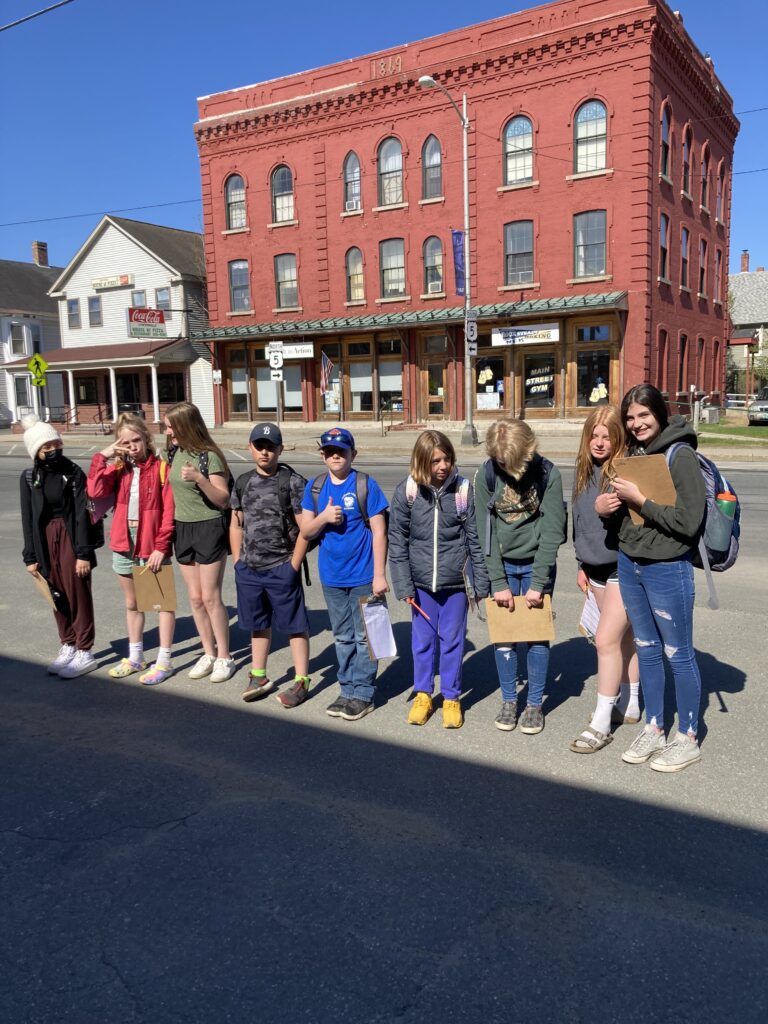
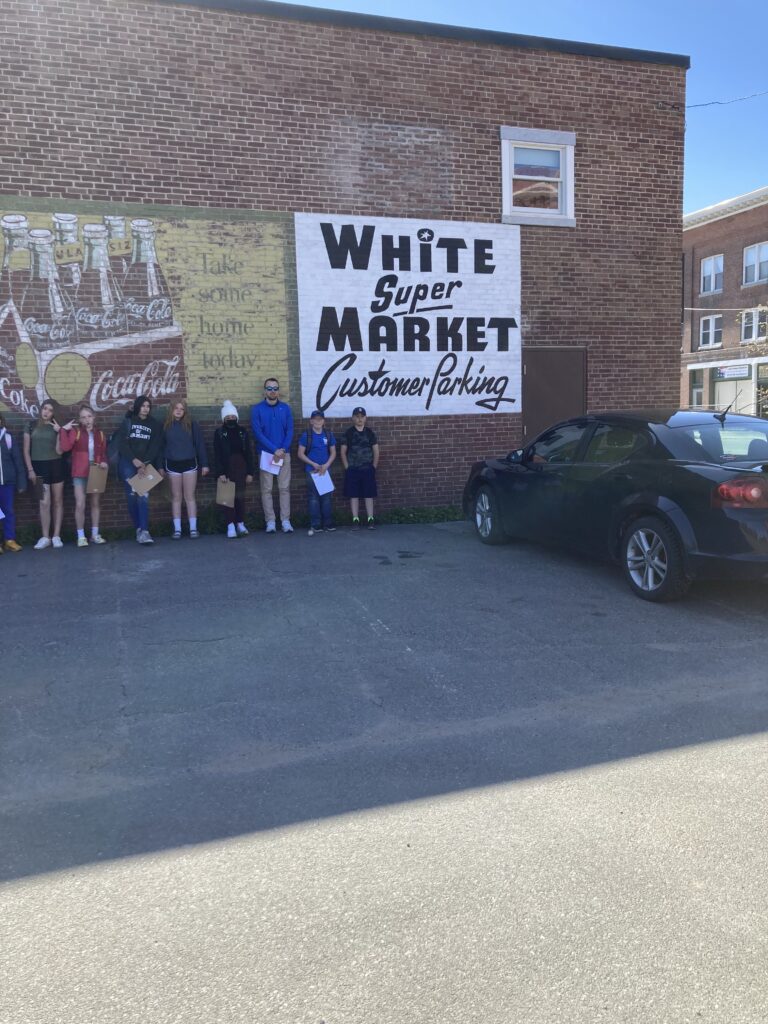

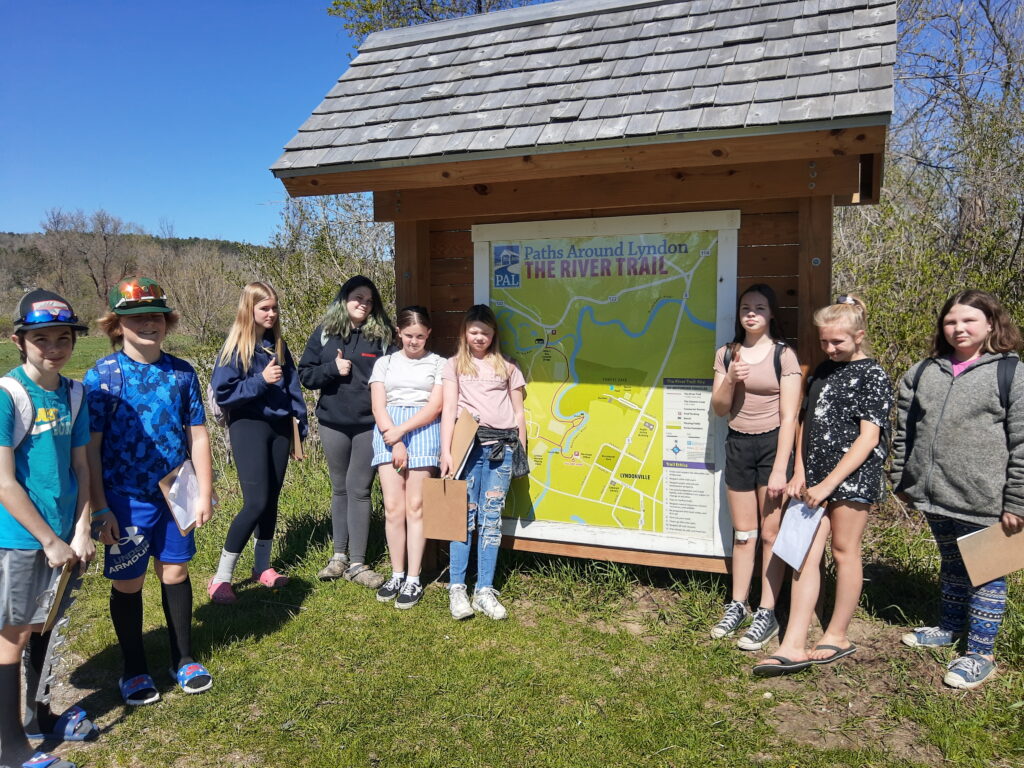
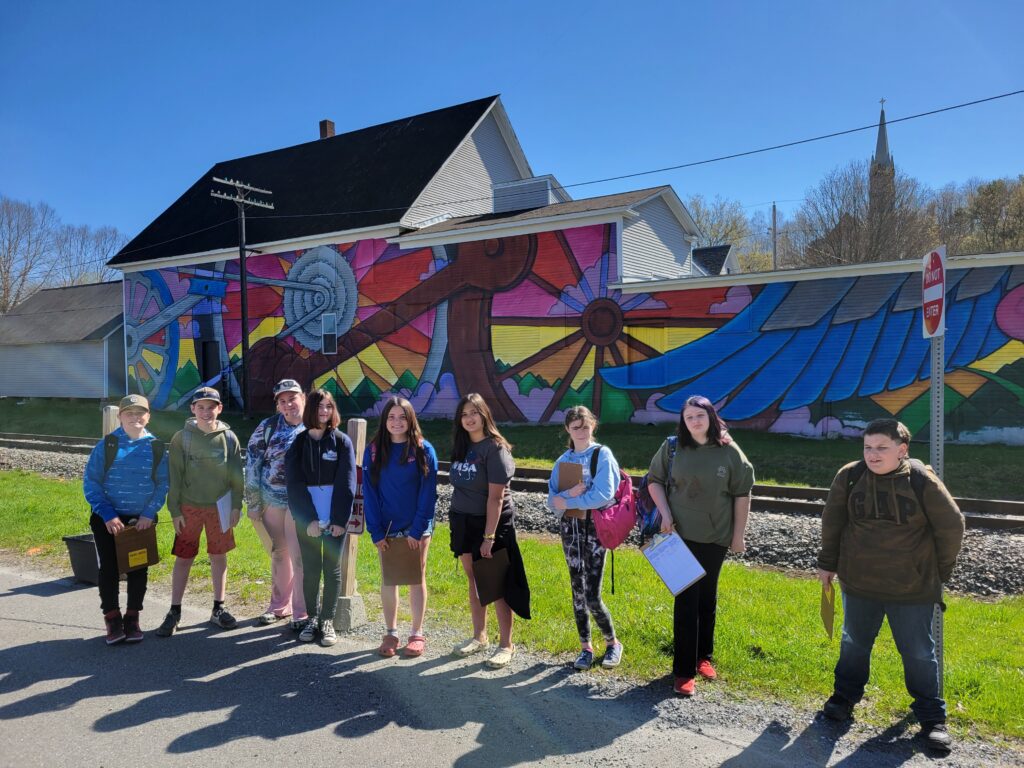
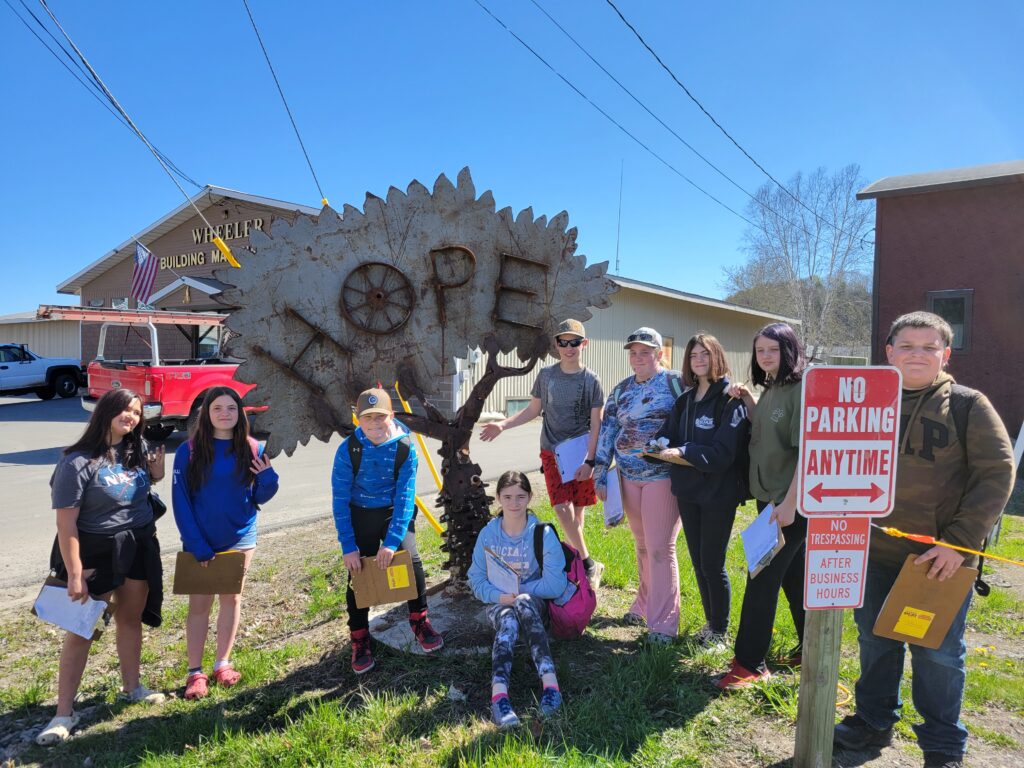
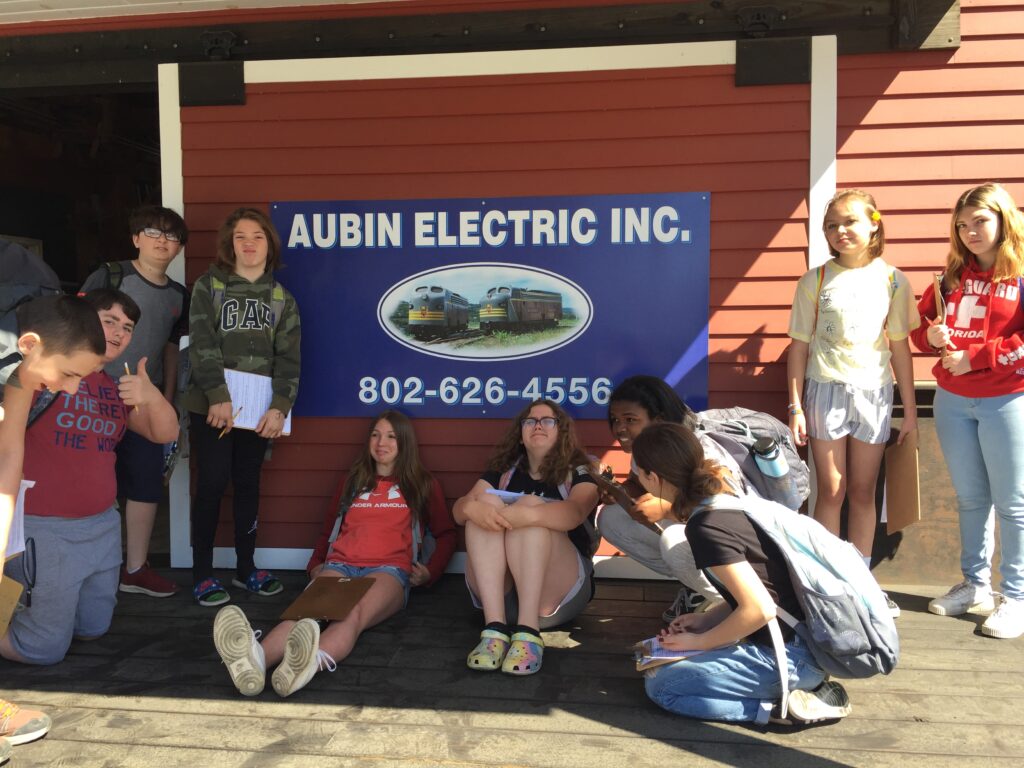
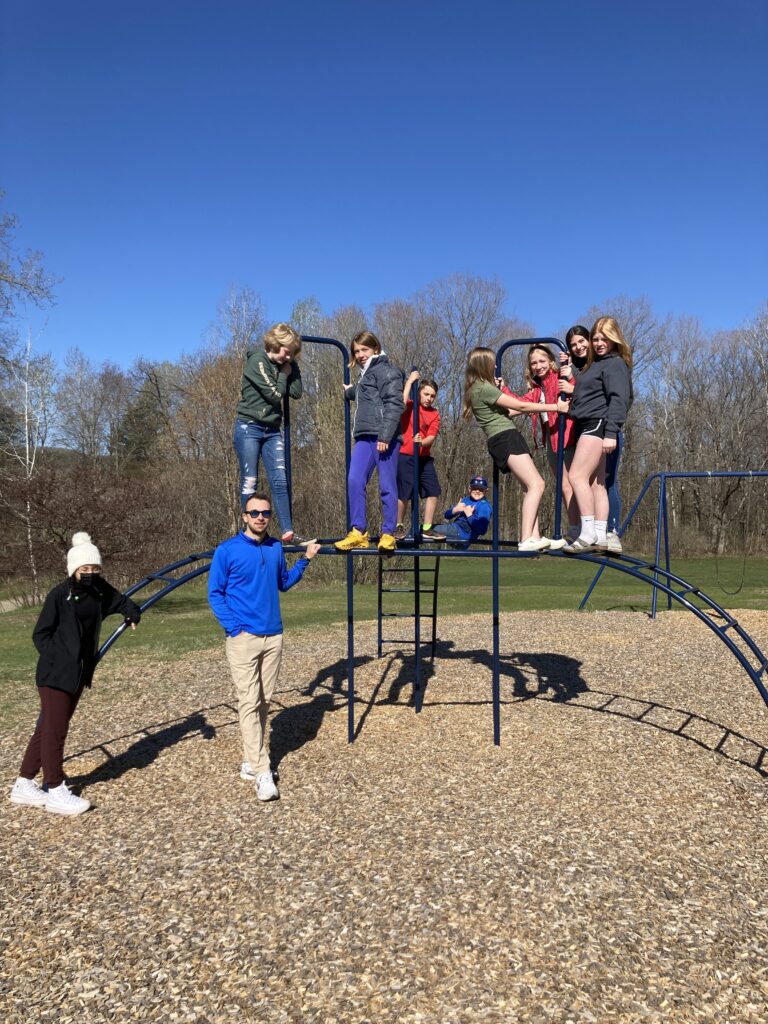
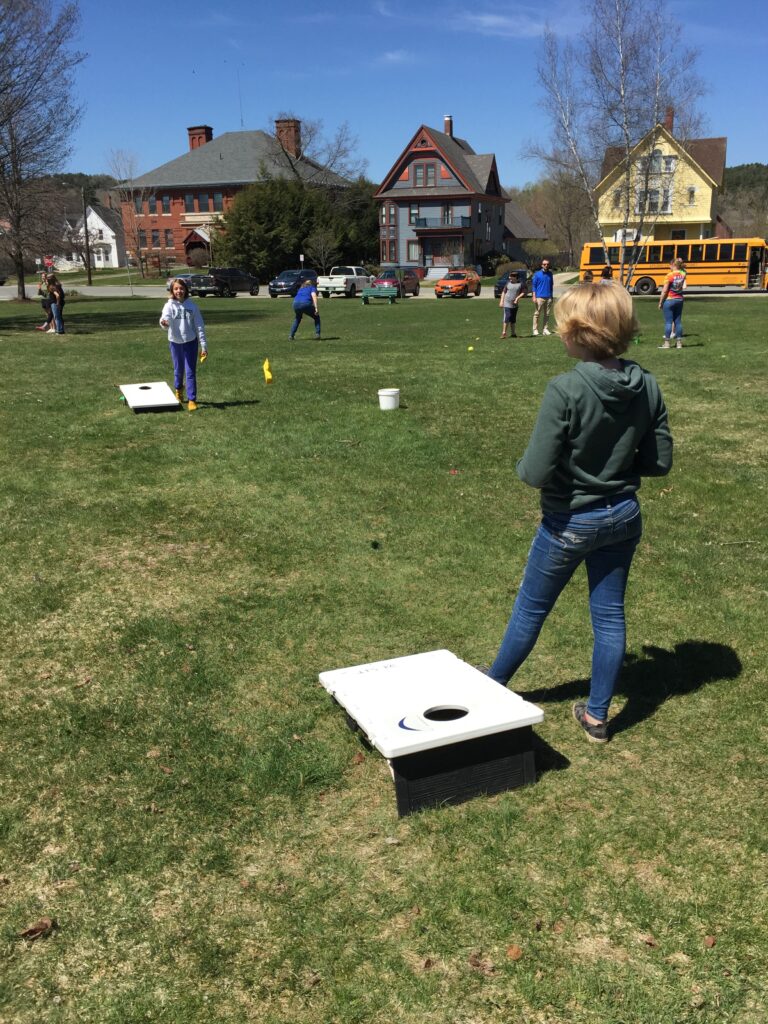
Forming and brainstorming
Over the next few days, six community members visited the team to give students varied perspectives on the history, values, assets and needs of Lyndonville. The esteemed presenters included:
- Eric Paris – A local dairy farmer and Vice President of the local historical society.
- Joe Benning – A state representative and candidate for Lieutenant Governor (who eventually took the students on a field trip to the State House).
- Beth Kanell – A historian and novelist.
- CJ Aubin – A community member and business owner with multi-generational family connections to the community.
- Ben Mirkin – Associate Professor of Outdoor Education, Leadership, and Tourism at Northern Vermont University.
- Nicole Gratton – Director of Planning for the town of Lyndon. She brought an understanding of logistics, and connection to all of the research, zoning bylaws, and other relevant town information that had come up in the information-gathering phase.
It was a whirlwind week, but worth it, as noted by Tyler: “There was a lot to plan for the teachers a lot of logistical stuff but by the end of that week all of us, the kids and the teachers, were motivated and happy. Teachers were feeling like it was like one of the best weeks we had all year. After that we were like, okay, now, we have really started.”
By week two, students were ready to run with all sorts of ideas. Some students started to naturally group themselves into pairs for projects that they wanted to work on together. The team then clumped students into topic groups so that students could share resources across projects.
Let’s get organized
Before completely opening things up for students to chase their dreams, the team did some foundational learning together and established some structures.
First, students did some research about community improvement. A worksheet guided their exploration of resources organized on a padlet. The resources ranged from general ones about what makes thriving community to specific articles about Lyndonville, many of which were written by presenters from the previous week. Students contributed to a JamBoard as a centralized brainstorming spot.
Next, the team solidified the expectations and products that students would be asked to complete. Students participated in a Humanities workshop about the persuasive product that they would create and a science workshop about the model they would build. Students studied and unpacked the rubrics for these products that linked to the Transferable Skills of self-direction and communication. These experiences and tools made it clear how the products would serve as evidence of learning.
Along the way, students completed tasks to receive concrete feedback about self-direction (the main focus). For example, one day they created a business plan and logo that connected to their early ideas about improving the town. These tasks expanded students’ understanding of the expectations for self-direction and built skills that could be applied again later.
Finally, students created an initial project plan. They explained their project, made a case for working with a partner if this is something they wanted to do, and started costing out materials. Teachers conferenced with students to provide feedback and approve plans.
The foundations had been fully laid and it was time to get messy.
The messy phase
The third week of the project brought lots of work time. Teachers supported students in everything from making connections to their content areas to getting in touch with people and resources in the community.
Michelle Bechanan, math teacher, noted: “As a math teacher involved in this project it can get messy because the math each student might need can be very different, and this makes it both energizing and challenging trying to help all of the students with the different math they need.”
Yes, it’s messy, but it’s also a math teacher’s dream to have students asking to learn math to do something that they care about. This is the intrinsic motivation that is the holy grail of education, and one of the main reasons why PBL is such a powerful, research-based pedagogy.
As put by Temperance, a sixth grade student,
“This was the most engaging things we did all year. The reason that I am the most engaged in this project is because it means a lot to me.”
The momentum of meaningful learning carried students through this work period. Teachers arranged for some “stress test” moments along the way, where students would reflect and provide feedback to each other about how realistic their projects were.
Eventually, students learned that they would be presenting their ideas to mentors from the community. They did some warm up pitches in a Shark Tank-style activities, reflecting on how to create short persuasive presentations. Students tamed the messiness of the work week by condensing their project ideas into digestible pitches.
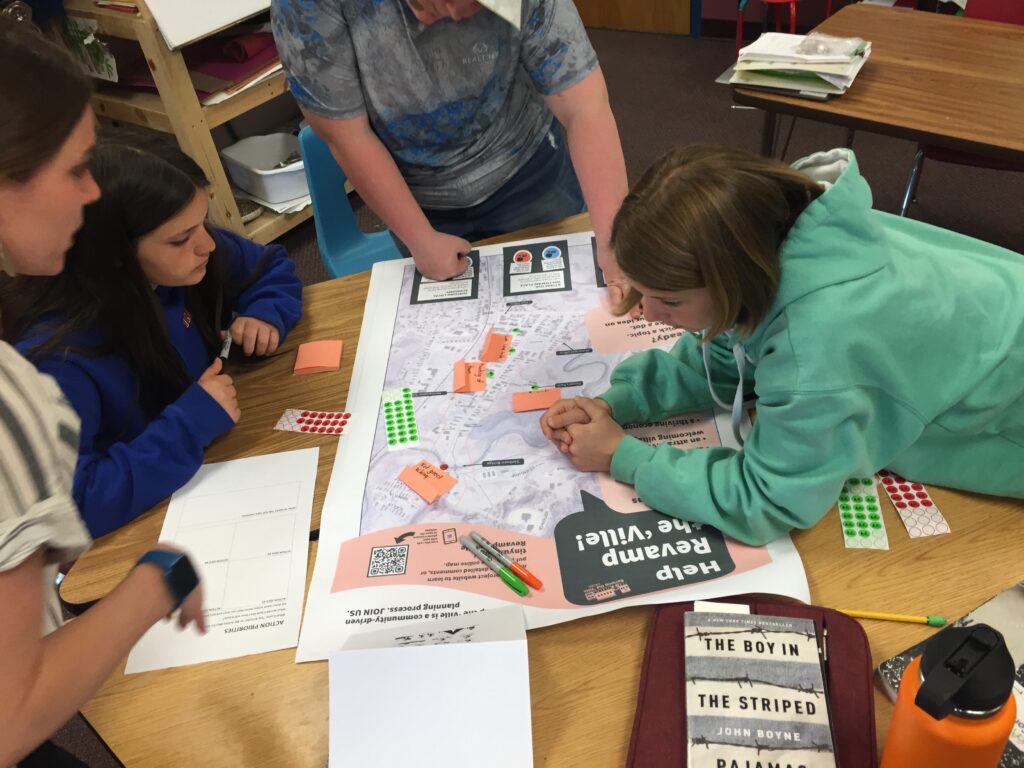
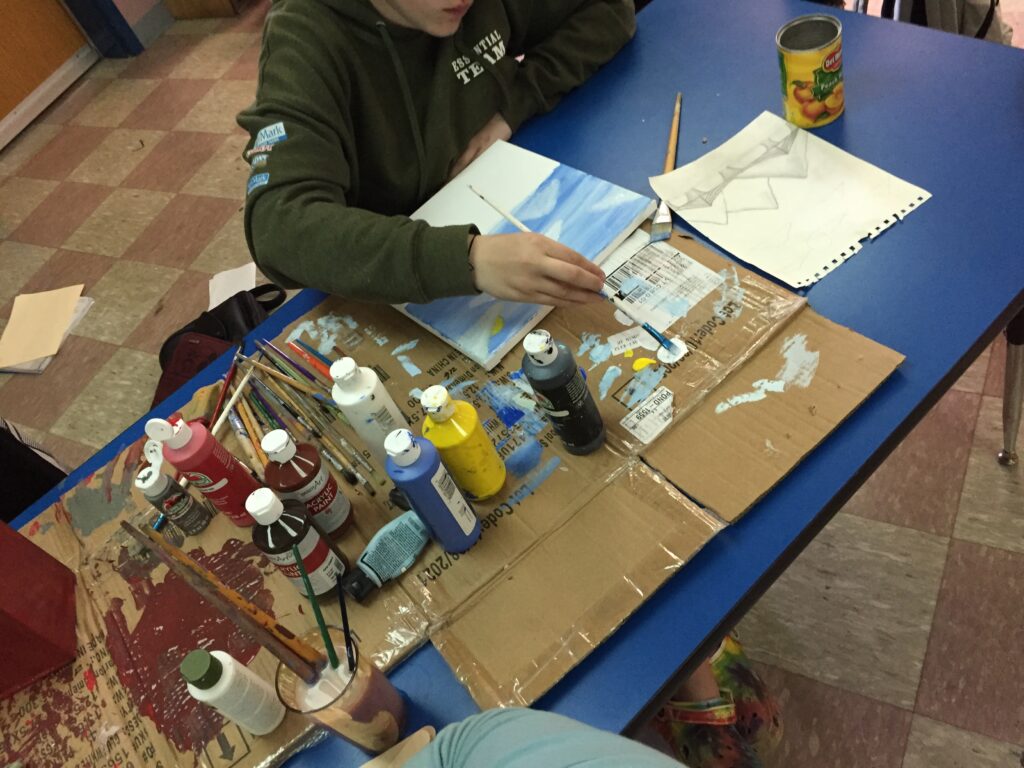
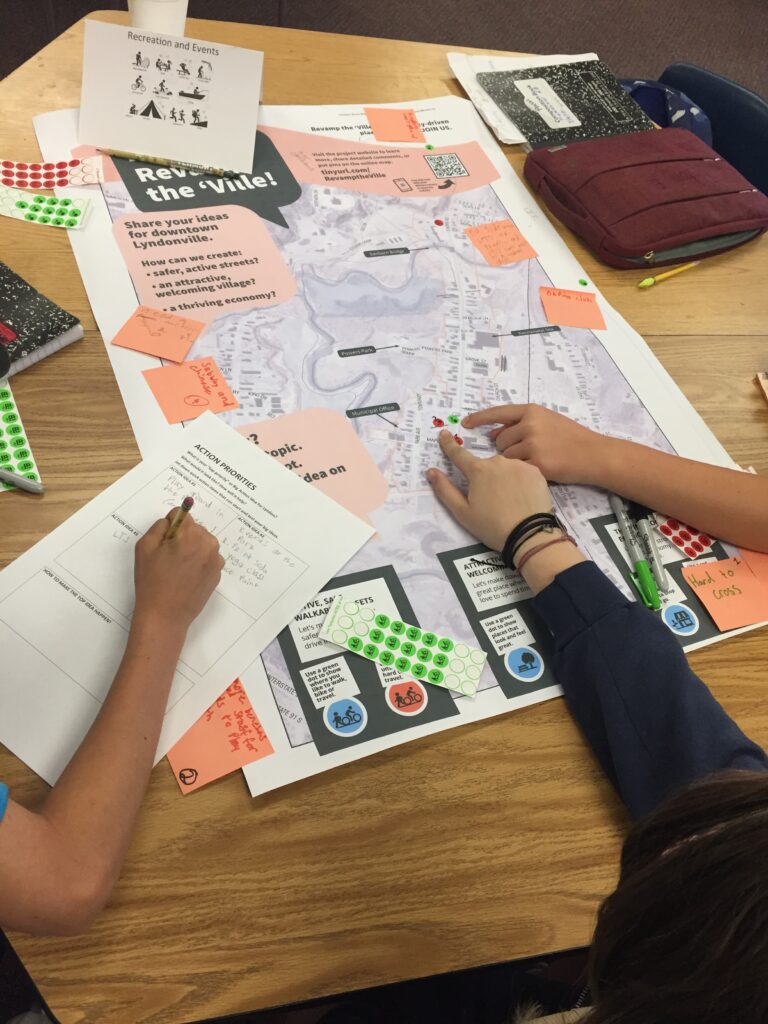
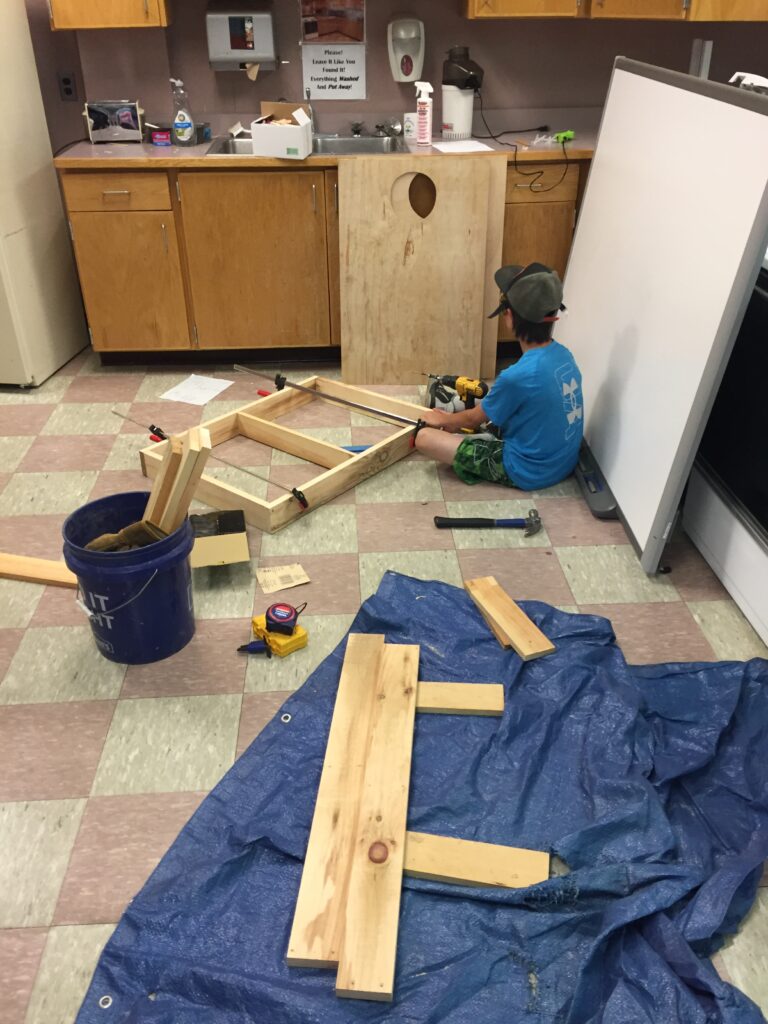
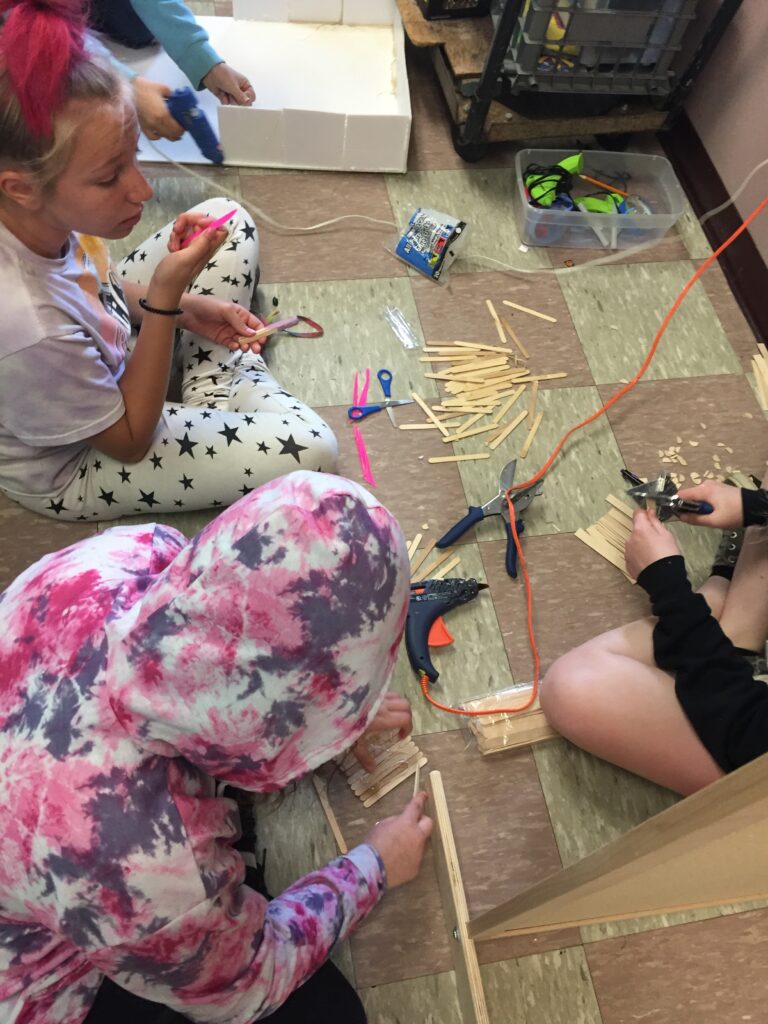
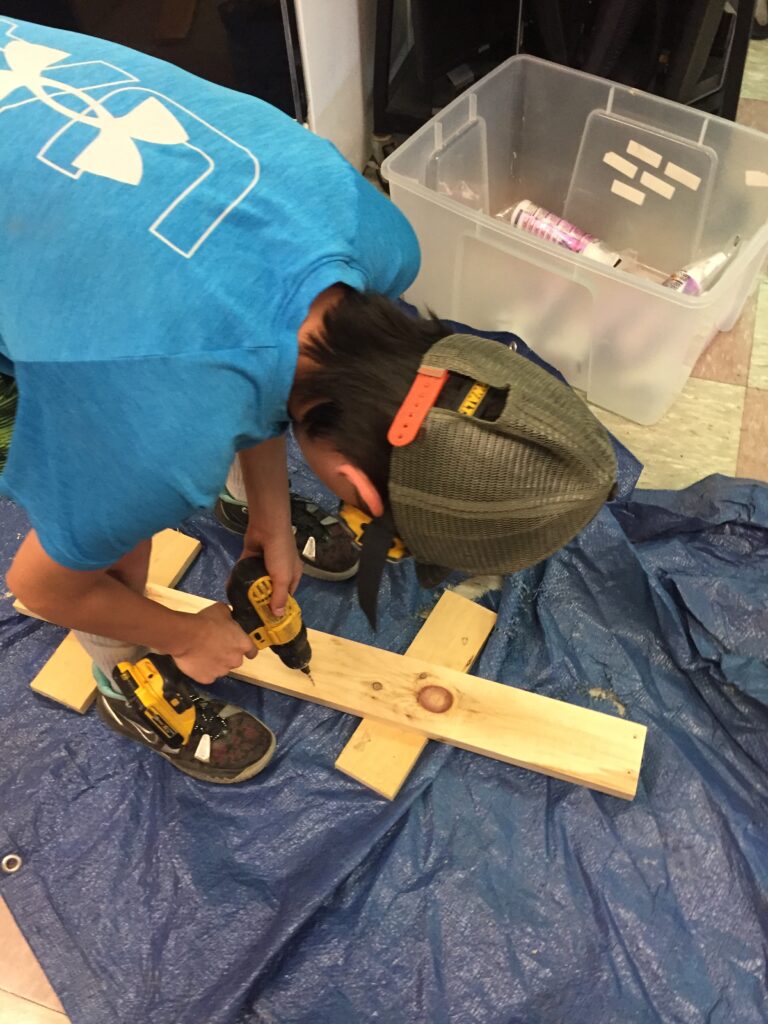
Mentor Day!
Before submitting their persuasive products and models, and a week before exhibition day, students shared their projects with mentors from the community and received feedback.
Tyler explained,
“We didn’t want students to just present finished projects to community members. Ou goal from the beginning was to have community members be a part of the projects and actually work alongside kids.”
Community mentors circulated to students, heard their ideas for improving the community, and offered verbal and written feedback. Comment cards encouraged mentors to be as specific as possible
Justin Smith, the Municipal Administrator for the town, focused his feedback on feasibility. “It was a great experience for both sides, an opportunity for understanding why things can be done and why can’t they be done.” He came away impressed by students and their ideas, with some good ideas injected into the town project: “These real life experiences are very important. It’s a give and take – I’m getting a lot of great ideas and they are getting some real life lessons about the expectations you can have for some of these projects”
The Final Exhibition
After incorporating feedback from Justin and other mentors into their products, students were ready to share. The team invited mentors, community presenters, families, and other teachers and students to learn and to celebrate.
And they didn’t disappoint. The library was abuzz as students showed off their models, made persuasive and informative pitches, and even modeled some real life shwag with logos that they had designed.
“These 6th graders have great ideas!” exclaimed Justin after the exhibition.
“They came up with unique things to do for our city and our town that us adults wouldn’t necessarily think of. It’s great to have kids throwing ideas at you … I can take these back and ponder: is there a grant for this? Is there a doable project here?”
After the excitement of the exhibition, students completed a self-assessment that asked them to reflect on their learning and to provide feedback to teachers about the project. Overwhelmingly, students expressed that Revamp the Ville had been the most important and fun part of the school year.
CJ Aubin, who had been involved since day one, was still floating after the exhibition had wound down. “There are some great ideas in the air. The dreaming is what I really like. To see them spend time on thinking up ways that can improve the lives of other people in the community that means so much to them.”
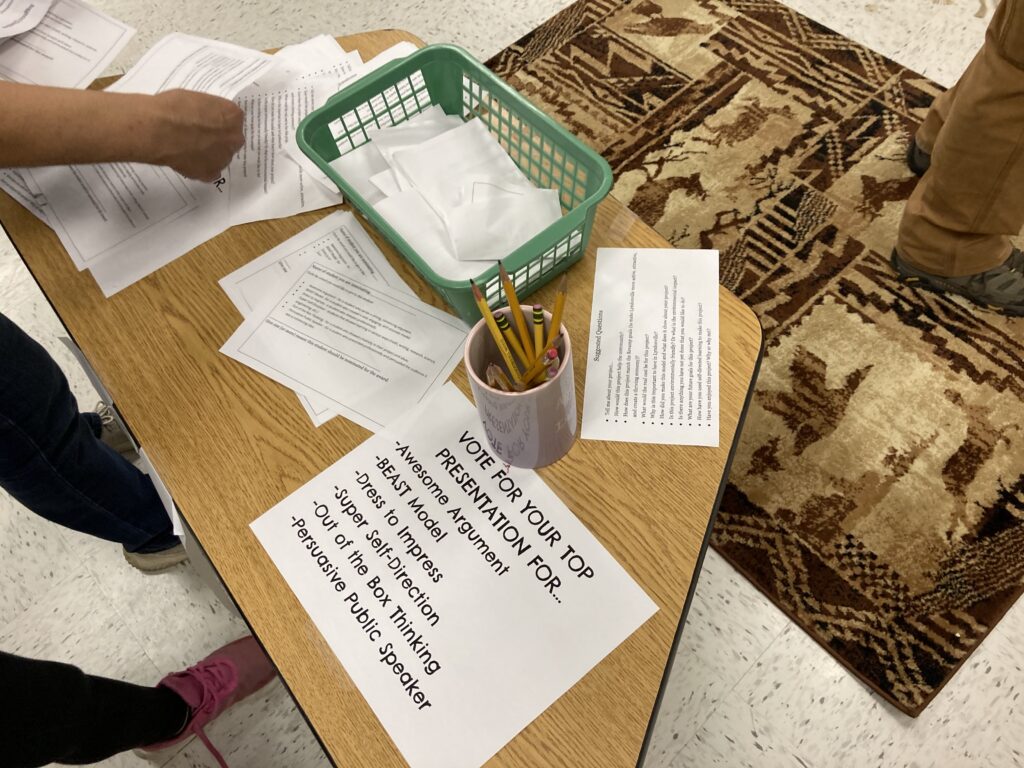
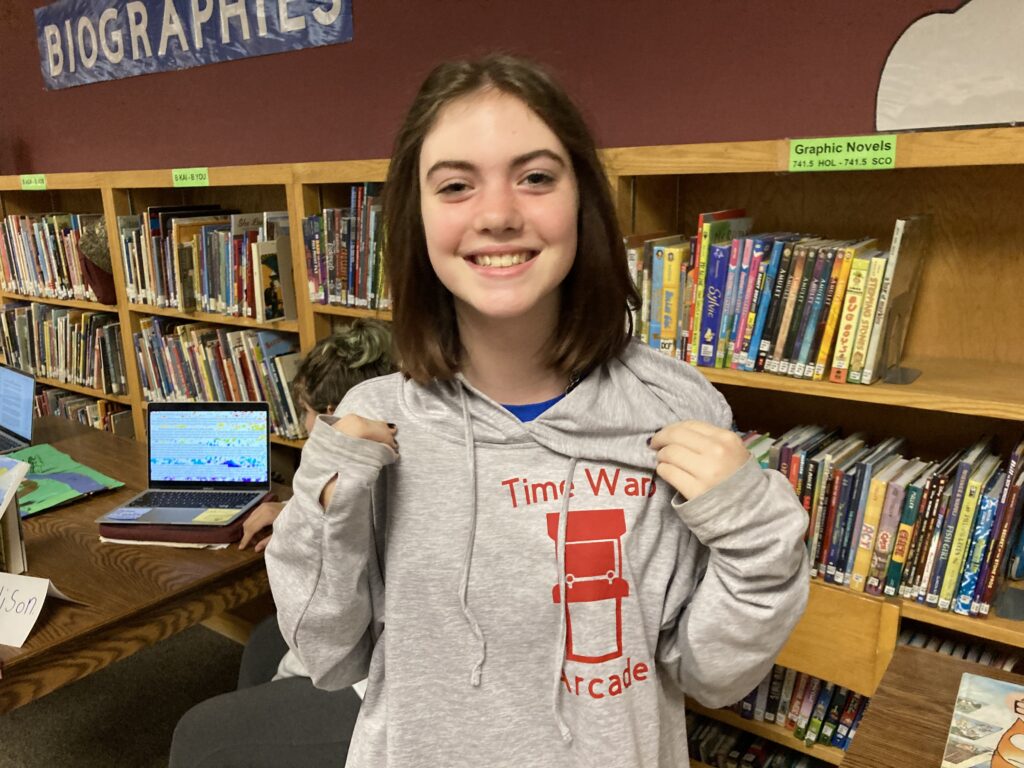
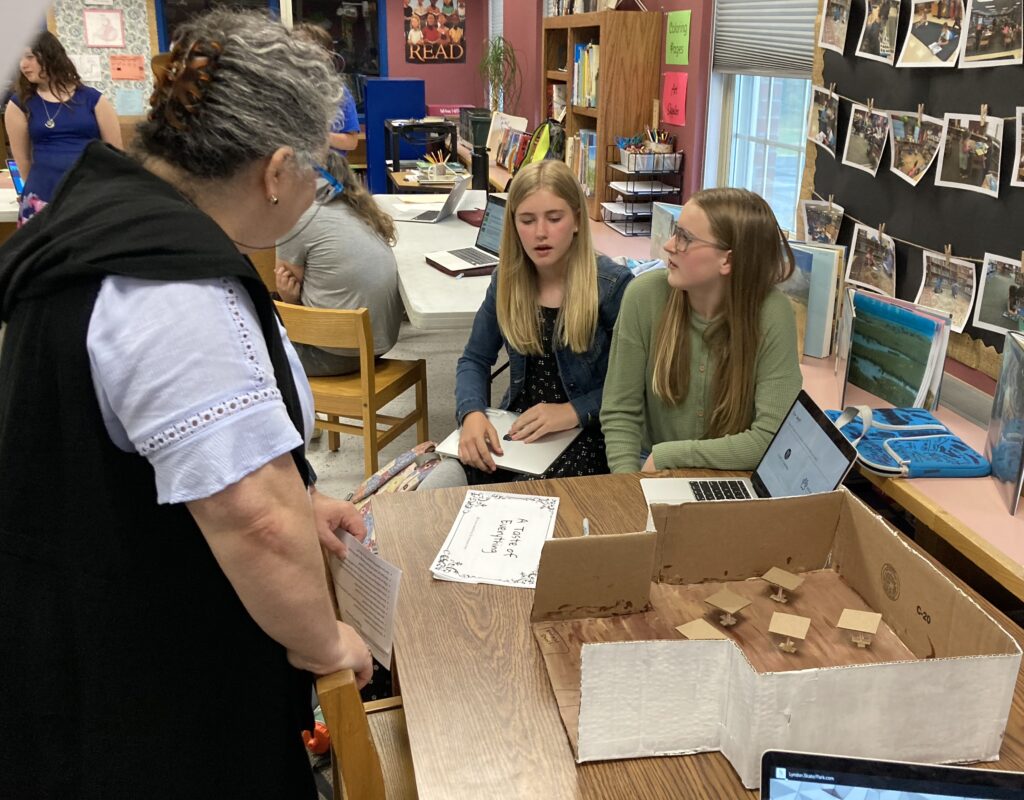

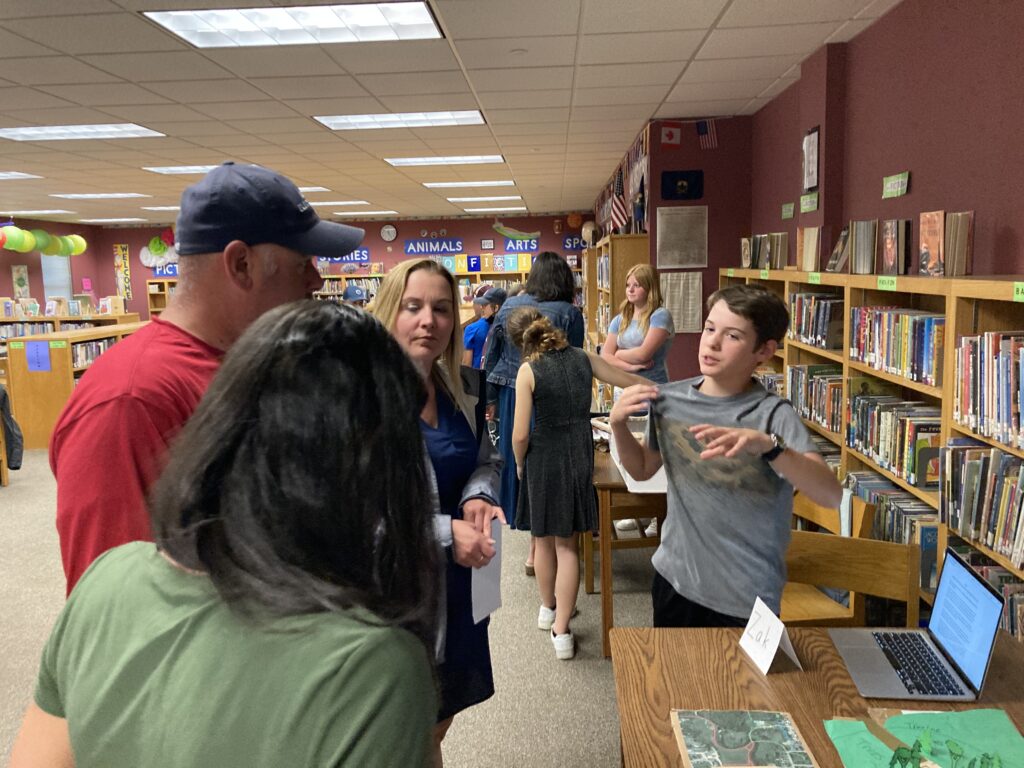
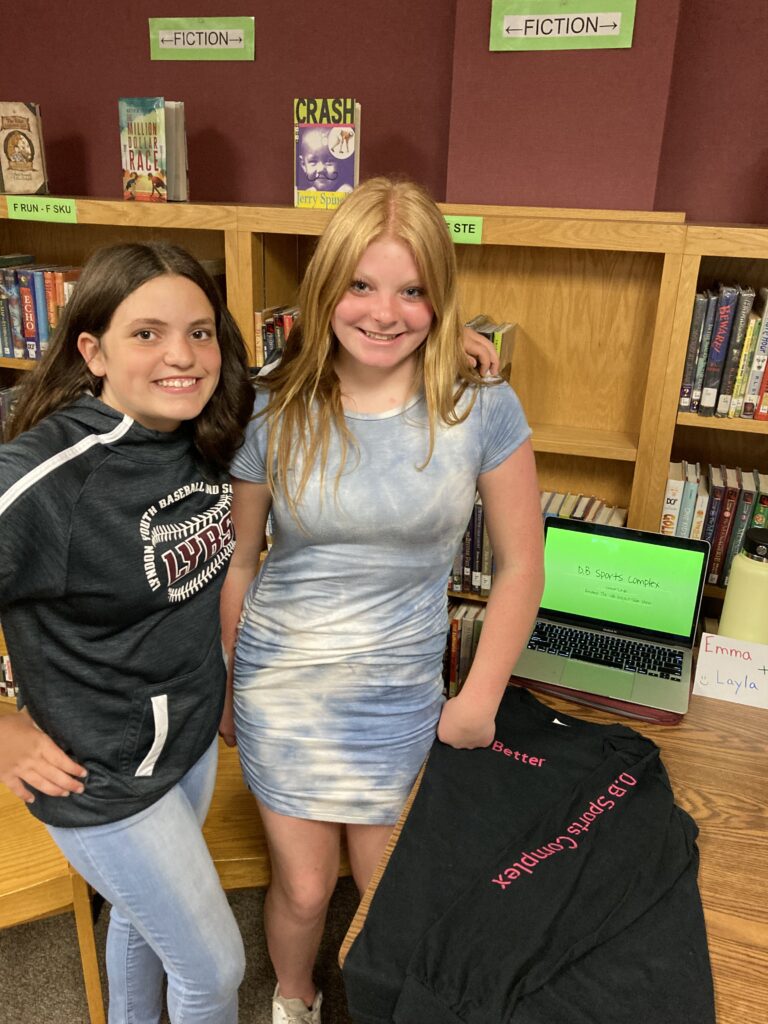
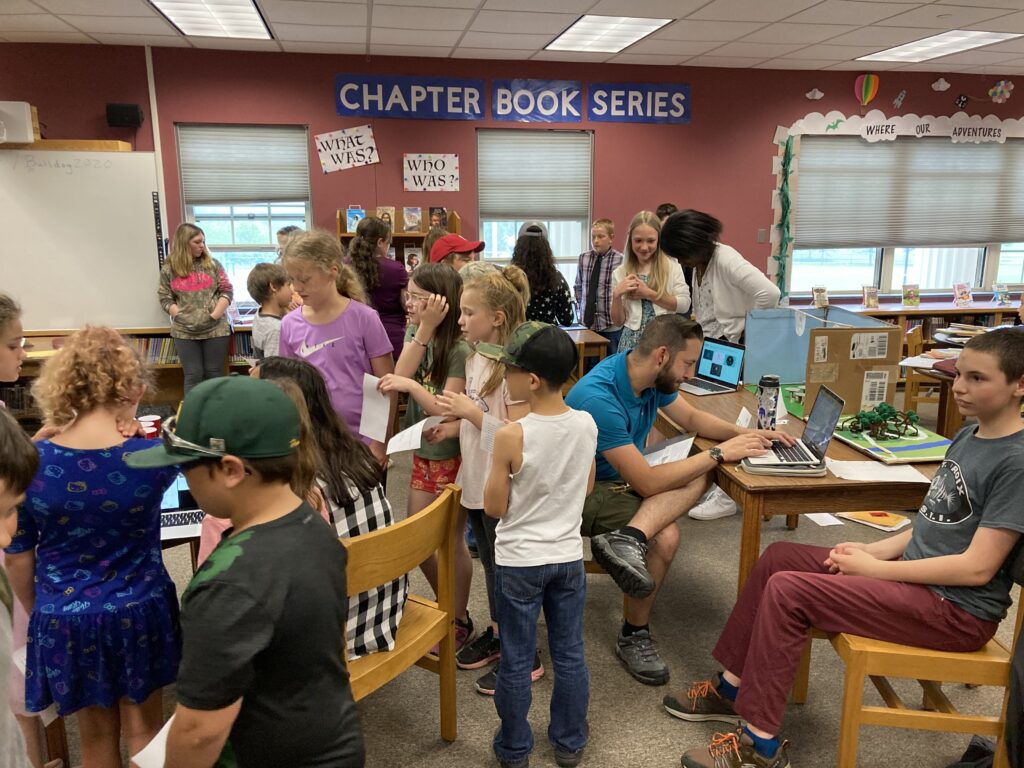
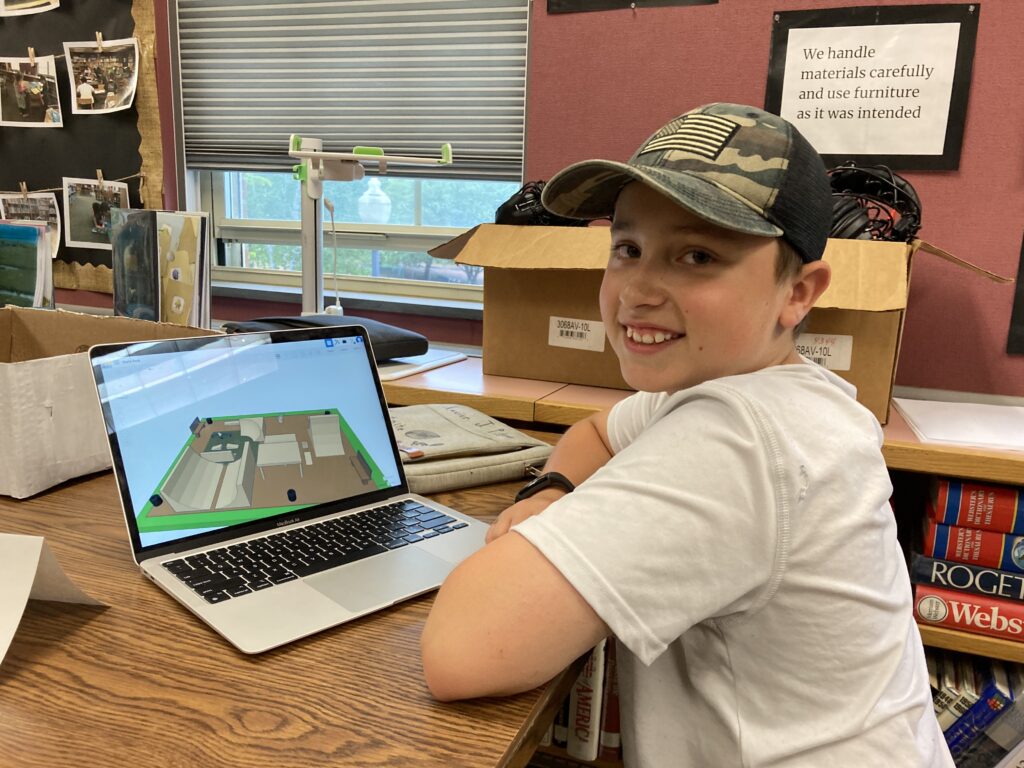
Take-aways
When asked to offer some tips and lessons learned, Tyler came up with six:
1. Depth over breadth for cross-curricular proficiencies
For cross-curricular learning objectives like the Transferable Skills, don’t worry about coverage or comprehensiveness. Pick one or two and provide students with multiple opportunities to unpack them. All of this practice will help students understand these complex expectations better and position them to self- and peer assess, gather relevant evidence, and meaningfully reflect.
2. Community connections pay big dividends
Bringing the community into school, getting students out into the community, and allowing students to work on improving community are all huge motivators and sources of learning. There are lots of examples for the power of community connections and it is always worth it.
3. Create a feedback rich environment
The sixth grade team set up many layers of feedback so that students could hear from peers, teachers, community members, exhibition attendees, etc. Feedback is crucial for proficiency-based learning generally, and in this case the team wanted students to understand that a crucial component of self-direction is the ability to incorporate feedback from others. There was also a helpful division of labor: teachers focused on self-direction and external mentors were looked at the products and ideas.
4. Set time aside to plan and collaborate
Making magic like this is not easy. The team gave themselves ample time to work together so that they could be responsive to student needs and to the emerging aspects of the project. Tyler put it this way:
“Try to be conscious of just enjoying the time you have with the kids and to not overplan.”
You can get a jump by looking at sample projects like this one and others.
5. Your students will love it!
Michelle, the math teacher on the team, had not used a project based learning approach before Revamp the Ville. She shared afterwards: “Through my experience with project based learning I have found that the students are more engaged with their learning. They take more ownership to their learning because they see a real life application to what they are doing. Making the project something that they feel like they can have some say in is powerful! … I would highly suggest teachers do at least one of these projects a year.”
Students echoed this sentiment. Let’s let them have the last words:
- Arie – “It was actually fun, how we were interacting with the community in a way. It was cool how they involved us, because it is not only adults that should be able to make decisions.
- Nevaeh – “Students like hands on things. Rather than just doing it on your computer. Because we can work with your friends.”
- Jamion – “I hope we do more of this kind of project because it can help build community.”
- Temperance – “In the future, I think we should do this literally every year. Because it teaches kids that not only are you helping the world, but you could help yourself.”
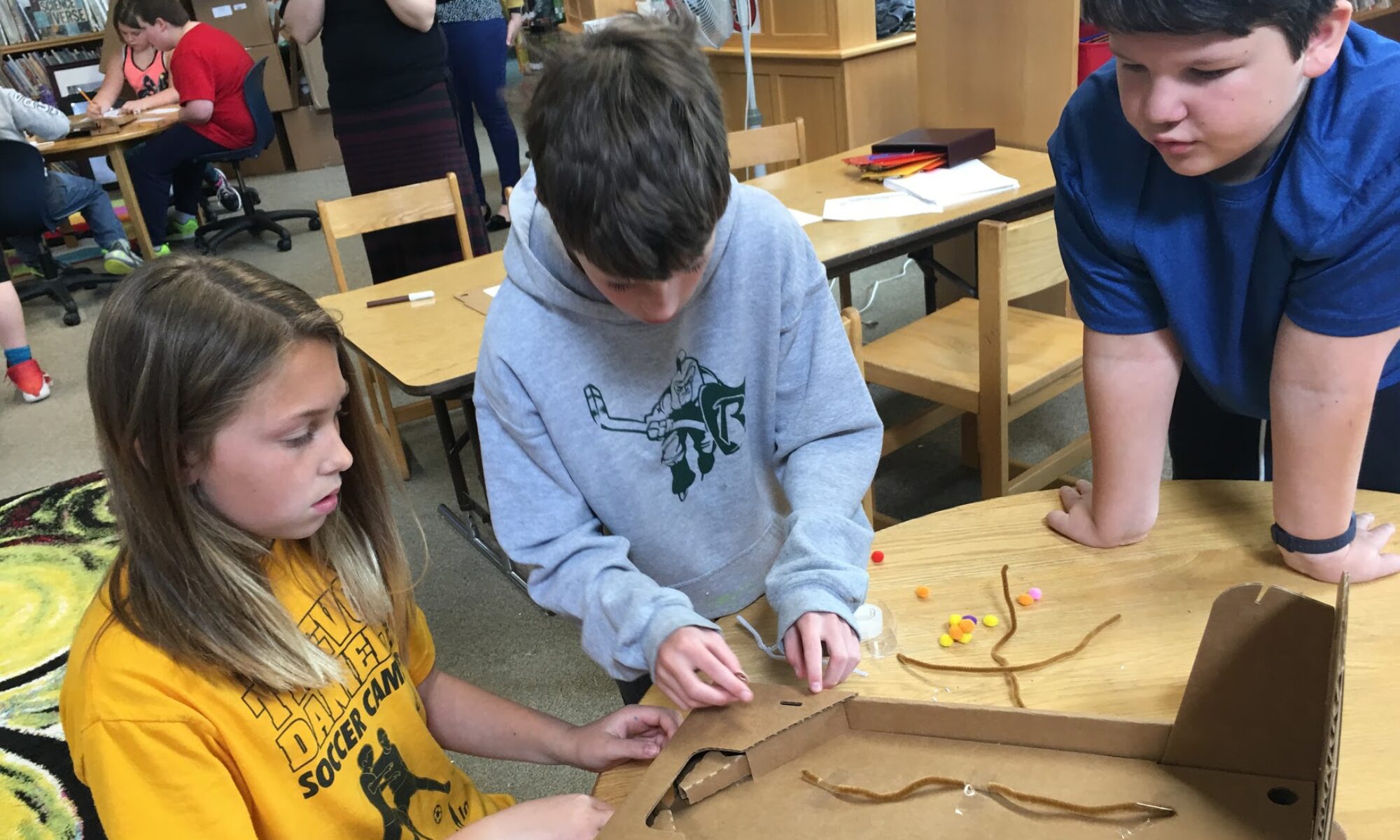

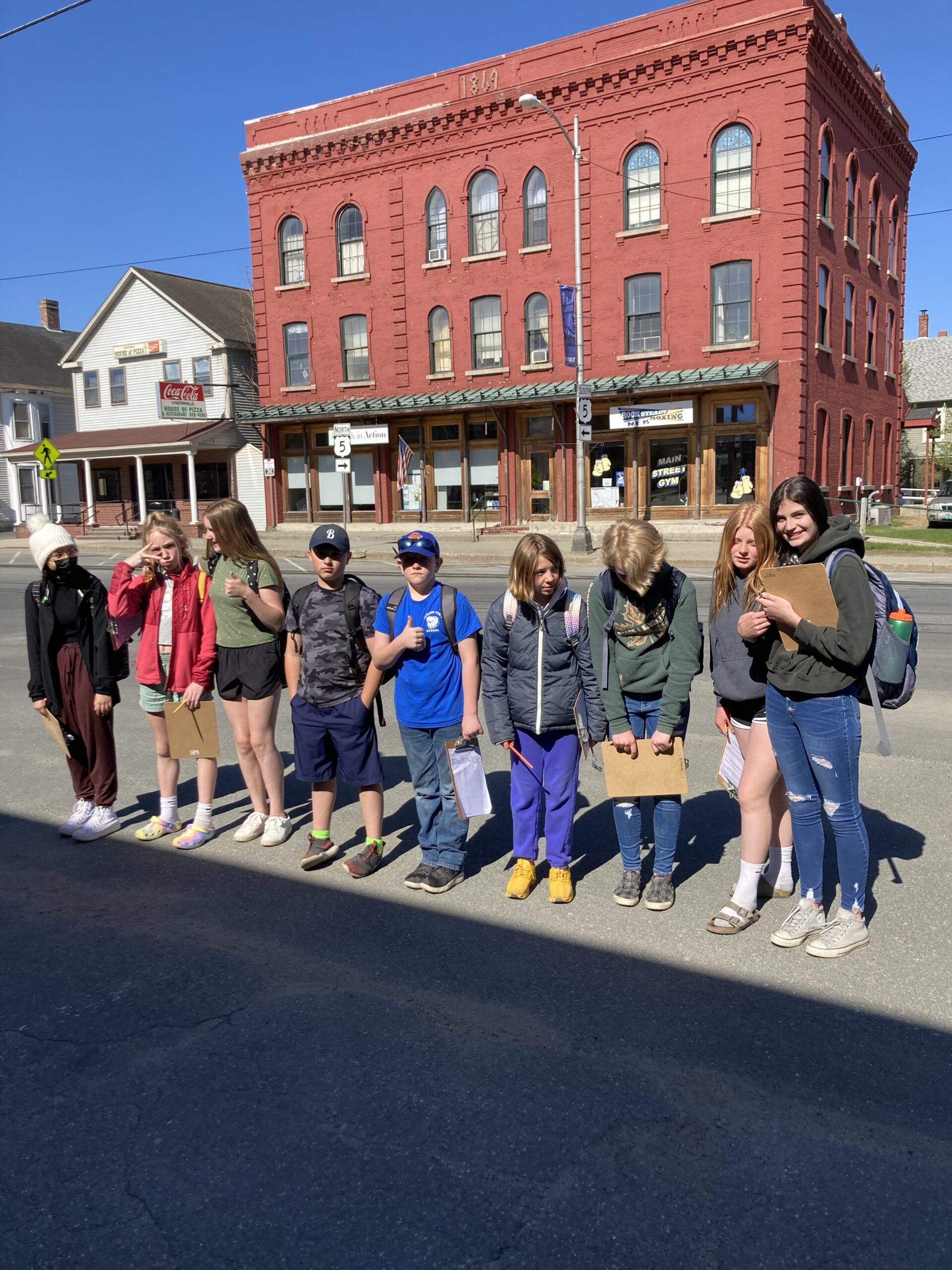

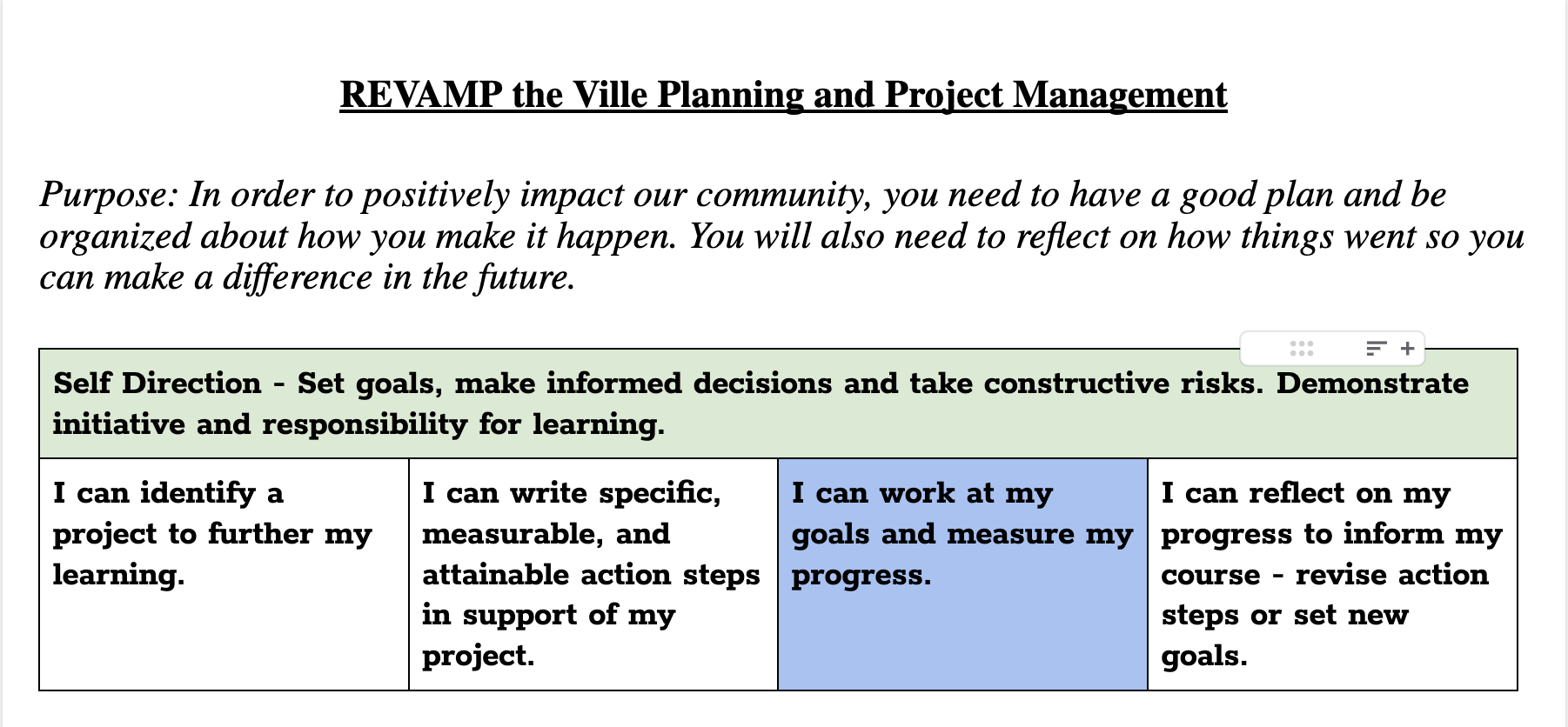
One Reply to “Sixth Graders Revamp Lyndonville”
Comments are closed.